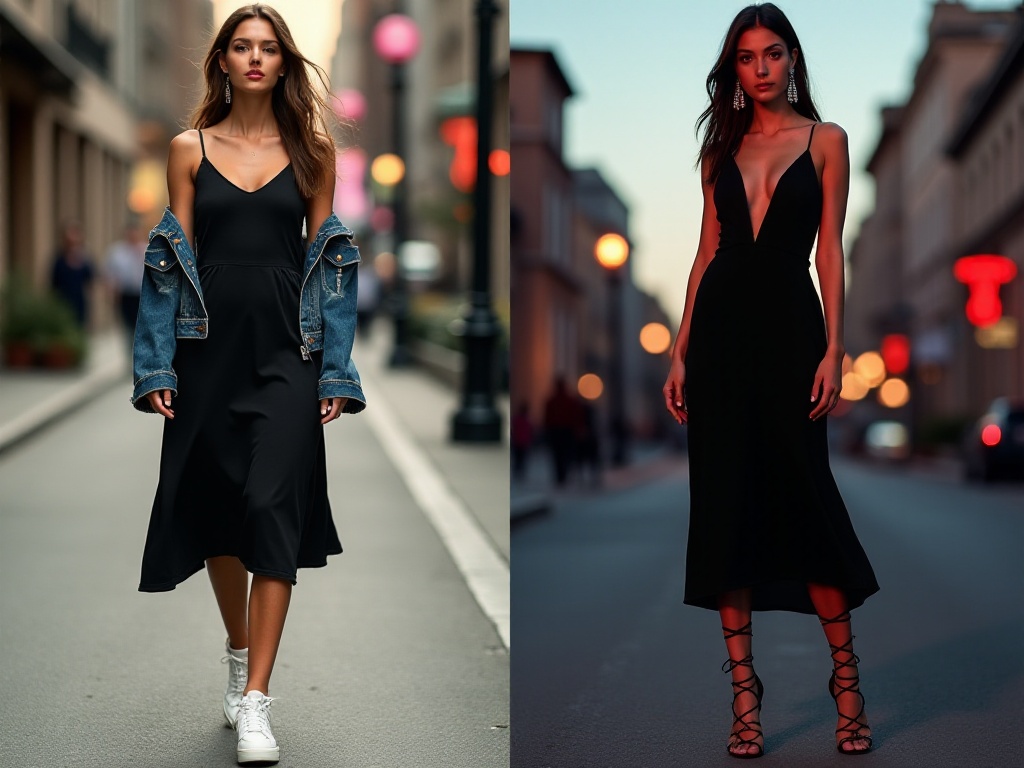Color Code
When it comes to fashion, color matching is often the most challenging aspect. Every time I go shopping, I struggle with choosing colors and worry about how to coordinate them once I get home. However, after years of exploration and learning, I've finally discovered some practical matching techniques that I'd like to share with everyone.
Complementary color matching is one of the best ways to express personal taste. I remember giving an important speech last year wearing a navy blue suit with an orange tie. This combination not only made me look energetic on stage but also added visual impact to my presentation. Why? Because blue and orange are complementary colors on the color wheel, creating a harmonious yet dynamic combination. However, it's important to maintain proper proportions with complementary colors - usually one main color with accent colors as highlights - to avoid looking too flashy.
Besides complementary colors, analogous color matching is also a versatile choice. For example, you can use different shades of blue to create depth. Like pairing a light blue shirt with a medium blue sweater and a dark blue coat, the overall look is very harmonious. This gradient-style matching is perfect for those who aren't ready to try bold color combinations - it's safe yet not monotonous.
Neutral colors are also great matching companions. Black, white, gray, and beige are the ultimate versatile colors in matching. For instance, a white T-shirt paired with a black blazer and gray dress pants is simple, elegant, and tasteful. Plus, neutral colors can be mixed and matched freely without worry.
Regarding colors, I want to especially remind everyone to consider seasonality. Spring and summer can feature bright, fresh colors like pink, mint green, and sky blue; autumn and winter can use deeper, more serious colors like burgundy, forest green, and camel. This not only suits the season but makes the overall look more coordinated.
In daily life, I most commonly use these color schemes: first, all-black outfit with a bright-colored bag or accessory as an accent; second, white top with jeans, which never fails; third, combinations of camel and beige, which always look sophisticated. These are tried-and-true combinations that I guarantee you can easily master.
The Art of Layering
Speaking of layering, this is key to elevating your outfit's sophistication. Many people think layering just means wearing multiple pieces, but that's not the case. Layering is about creating harmony between different pieces and achieving visual beauty.
Take the most basic combination: a white T-shirt with jeans might look ordinary. But if we add a camel cardigan and layer a plaid coat on top, it creates a completely different effect. The key here is that each piece must have its purpose, considering both practicality and aesthetics.
When layering, the combination of lengths is particularly important. For example, choose a fitted base layer, pair it with a loose sweater, and top it with a knee-length coat. This progression from inner to outer, tight to loose creates an outfit that's both warm and stylish. Plus, the varying lengths add depth to the overall look.
Texture matching is also crucial for creating layers. Different fabric textures can create rich visual effects. For instance, the sheen of silk, the heaviness of wool, and the warmth of knits - when these different textures are combined, they make the overall outfit more three-dimensional.
For specific layering combinations, I most often use: a silk shirt as the base layer, topped with a wool sweater, and a cashmere coat as the outer layer. This combination is not only warm but also looks very sophisticated. In summer, you might layer a mint chiffon top under a white linen cardigan for a fresh look that maintains depth.
Color transition is also important when creating layers. Whether transitioning from light to dark or using variations within the same color family, this helps create a more coordinated look. For example, a beige shirt with a camel sweater and dark brown coat creates a natural and harmonious color progression.
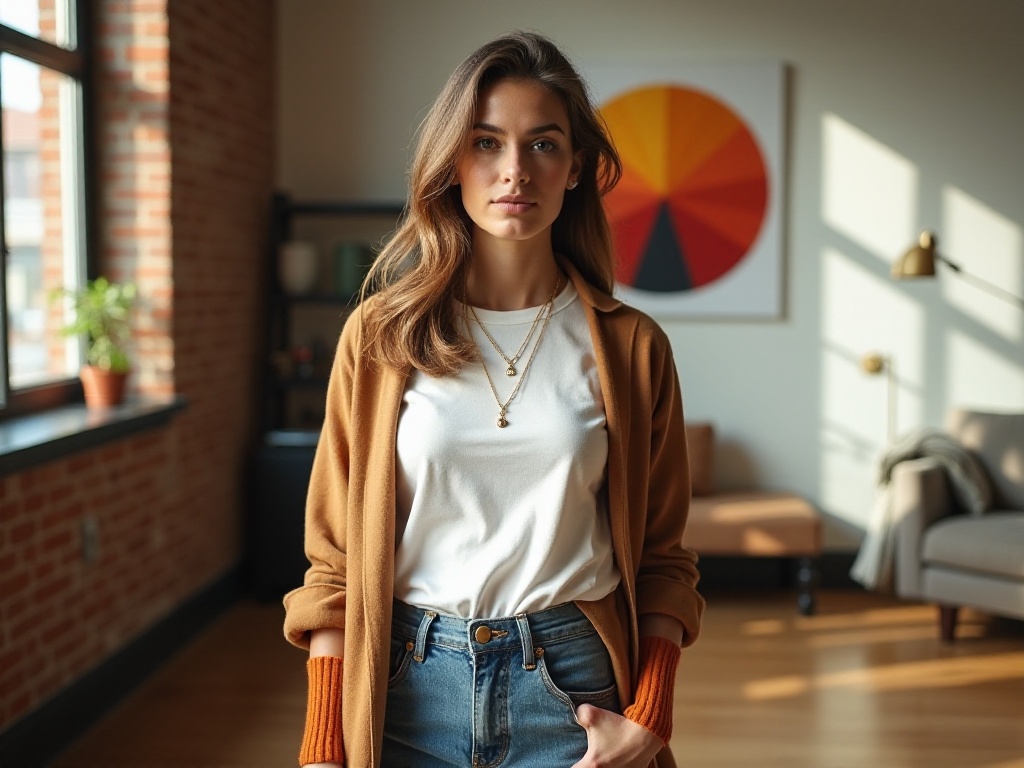
Elevating Your Presence
When it comes to enhancing your presence, the first principle to understand is that clothing quality directly affects the overall sophistication of your look. Rather than buying many cheap clothes, it's better to invest in a few quality pieces. For example, a $3,000 cashmere coat will maintain its shape for three to five years and develop more character over time. In contrast, a $600 budget coat might lose its shape after one season, making it less cost-effective in the long run.
When selecting pieces, pay special attention to details. Check if the stitching is neat, buttons are secure, and fabric has good structure. These details often directly reflect one's taste. I've seen many people wearing seemingly ordinary white shirts that look extremely elegant simply because of good fabric quality and proper fit.
Accessory selection is also crucial for enhancing presence. Remember the "Less is more" principle - don't overdo it. A delicate necklace or a simple watch often makes a better statement than wearing multiple accessories. When choosing accessories, consider your personal style and overall outfit. For instance, if you're going for an intellectual elegant look, a pearl necklace would be appropriate; if you're aiming for a vibrant fashionable style, a unique choker might be more suitable.
Regarding bag selection, I recommend investing in a classic style. Though it might be more expensive, classic styles are versatile and timeless, lasting many years. For example, Chanel's quilted chain bag or Hermès' Kelly bag are evergreen styles. Of course, if budget is limited, you can choose simple designed domestic brands, focusing on versatile styles and colors.
Shoe selection is equally important. The right pair of shoes can elevate your presence significantly. I recommend everyone have at least these basics: a pair of versatile white sneakers, formal heels, and comfortable flats. This covers most occasions. When choosing shoes, consider both style and comfort. After all, even the most beautiful shoes will affect your overall presence if they're uncomfortable.
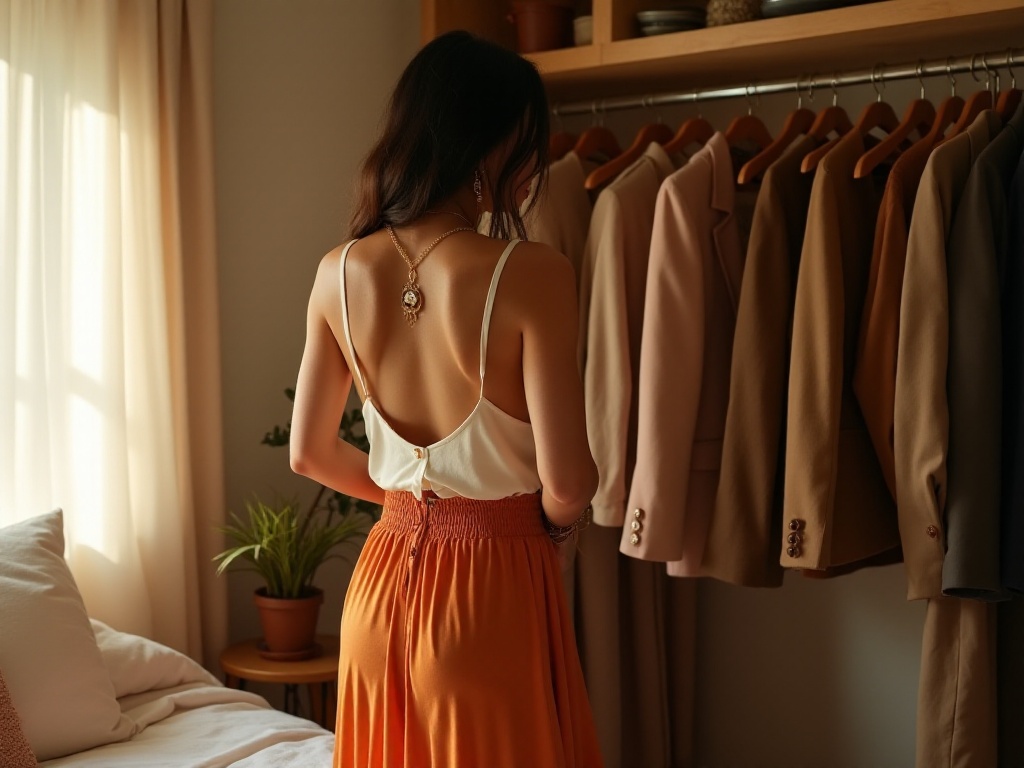
Style Creation
Everyone should have their own signature style. Finding your suitable style isn't instant - it requires continuous experimentation and exploration. Bohemian style is a great choice, emphasizing free-spirited elegance. Flowing dresses, layered jewelry, and earth-tone combinations create an artistic yet not overdone look.
Vintage style has also been popular in recent years. I particularly love pairing straight-leg jeans with penny loafers for a collegiate look. Just roll up the pant legs to show striped socks, and you instantly create a vintage literary atmosphere. The advantage of vintage style is that it doesn't become outdated with changing trends - instead, it develops more character over time.
Minimalist style is the most versatile choice. It emphasizes being "simple but not simplistic," showing different fashion sensibilities through clever combinations of basic pieces. For example, a white T-shirt paired with high-waisted straight-leg jeans and white sneakers might seem simple, but attention to detail can create a distinctive look.
When choosing your style, consider your lifestyle and work environment. If you're a professional who frequently attends formal occasions, an elegant intellectual style might suit you better; if you're a freelancer, you might try more personalized combinations.
Style creation should also consider overall consistency. From hairstyle to makeup, clothing to accessories, everything should align with your chosen style. For instance, if going vintage, you might choose retro curls and red lipstick; for minimalist style, sleek straight hair with natural makeup might be more appropriate.
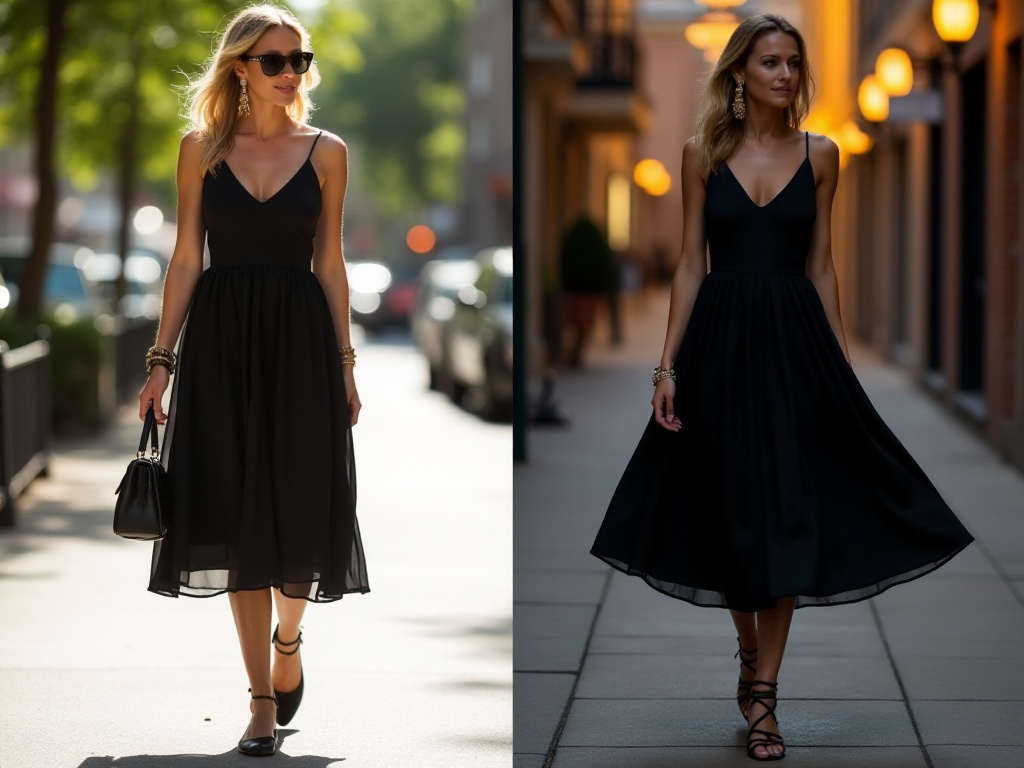
Practical Strategies
In the workplace, the ability to adapt one outfit for multiple occasions is an essential skill. For example, a black dress can be paired with a blazer and flats for a professional work look; for an evening event, simply change to heels and add a sparkly necklace to transform into an elegant dinner outfit.
Understanding your body type is key to choosing clothes. Different body types suit different styles. For pear-shaped figures, tops with ruffles or bat sleeves paired with A-line or straight skirts can balance body proportions. Apple-shaped figures might benefit from V-neck tops and high-waisted pants to create a slimmer waistline.
When shopping, pay attention to choosing the right size. Many people choose smaller sizes hoping to look slimmer, but this often has the opposite effect. The right size ensures comfort and best presents your figure. Always try clothes on and move around in the fitting room to check fit and comfort.
Seasonal clothing storage is also important. At the end of each season, properly clean clothes before storage. Store woolens in moth-proof bags and regularly maintain leather items to extend their lifespan. Also, regularly organize your closet, removing ill-fitting or outdated items.
For clothing care, always check care labels. Different materials require different care methods. For example, woolens are best hand-washed or dry-cleaned, silk requires special neutral detergent, and jeans shouldn't be washed too frequently to maintain their unique worn-in effect.
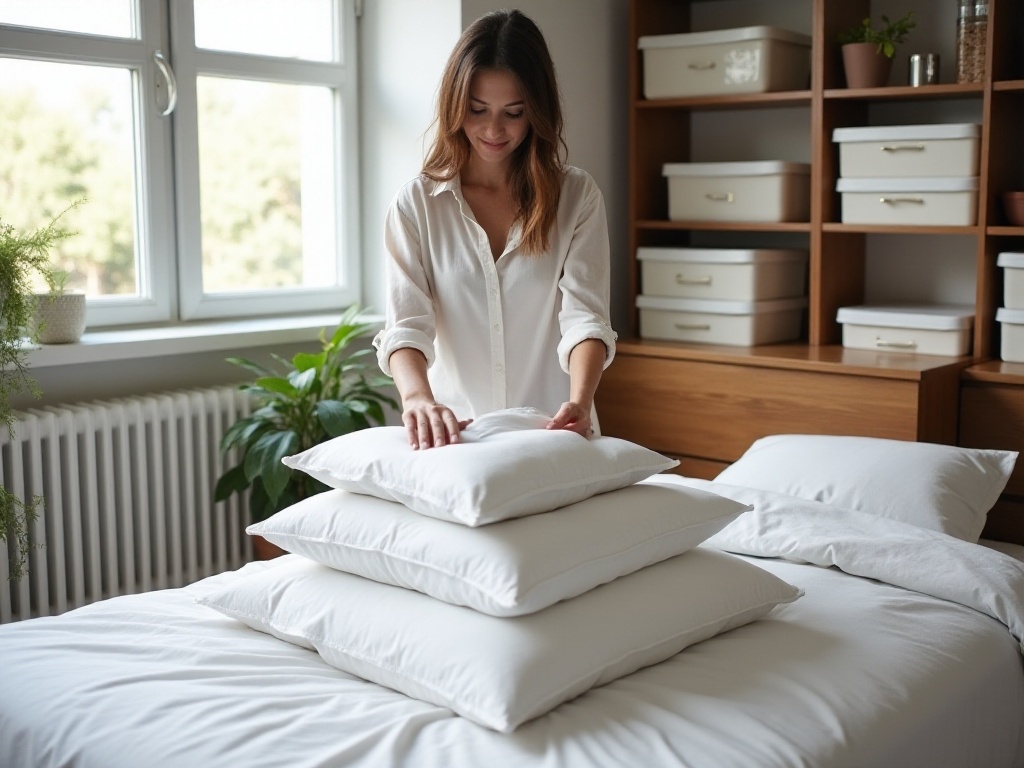
Conclusion
Fashion is an art that requires continuous learning and practice. It's not just about putting clothes on your body, but about expressing your personality and taste through appropriate combinations. Remember, no one is born knowing how to dress - these are skills that can be learned and practiced. I hope these suggestions help you go further on your fashion journey and develop your own unique style.





